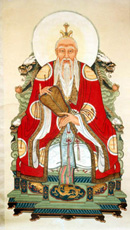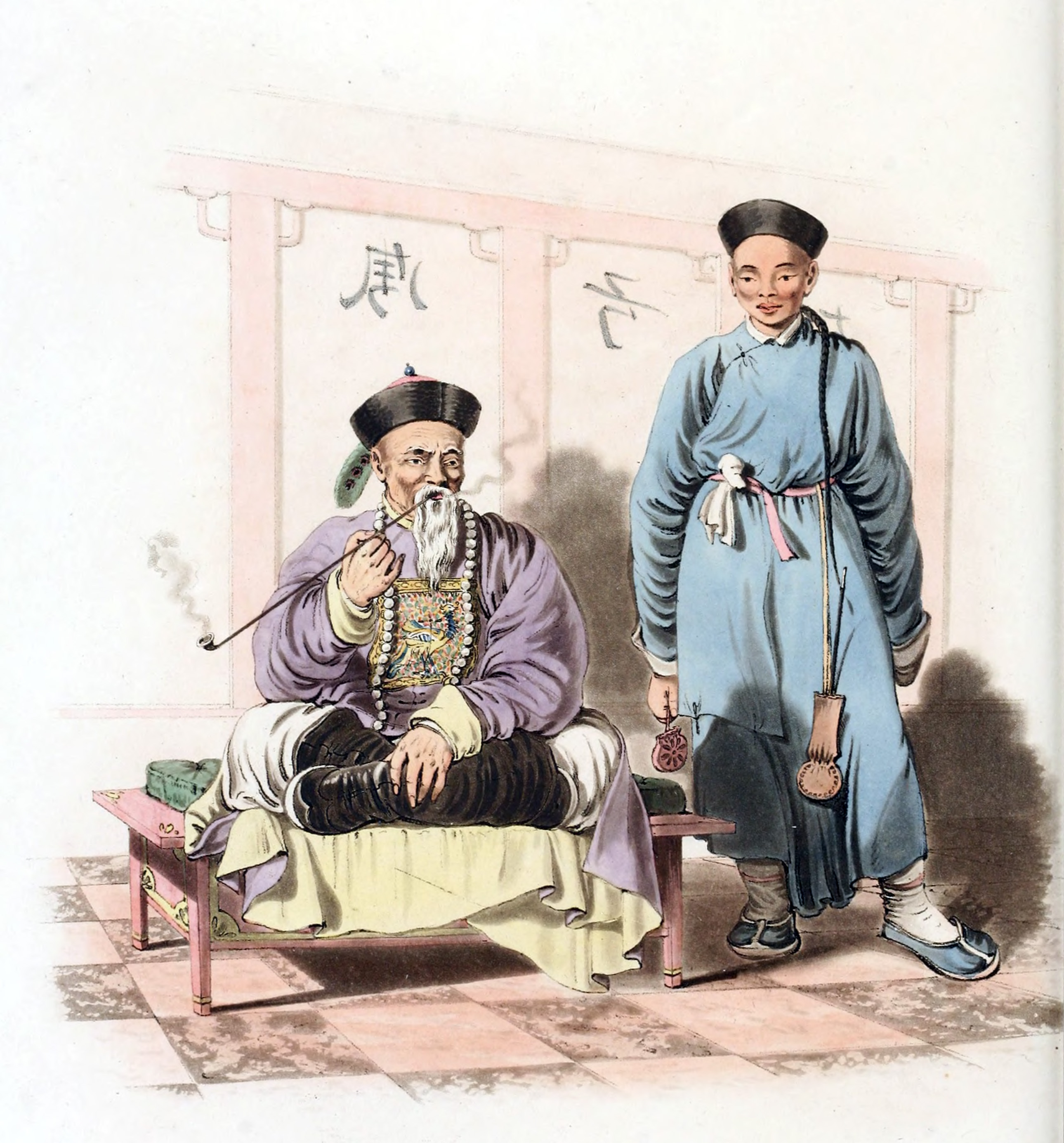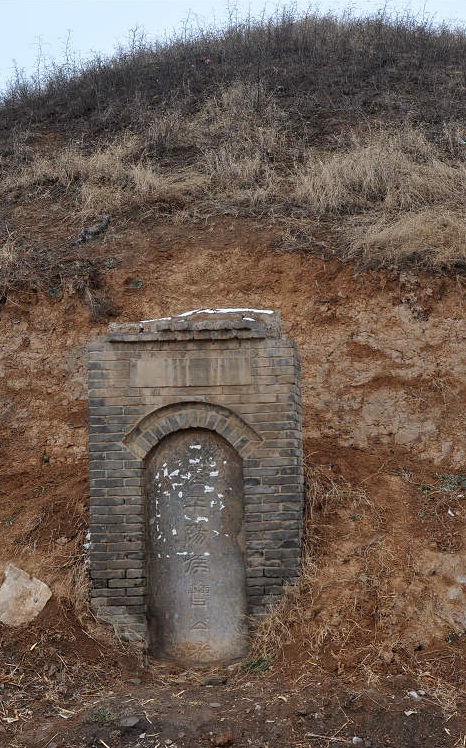|
Huang–Lao
''Huang–Lao'' or ''Huanglao'' () was the most influential Chinese school of thought in the early 2nd-century BCE Han dynasty, having its origins in a broader political-philosophical drive looking for solutions to strengthen the feudal order as depicted in Zhou propaganda. Not systematically explained by historiographer Sima Qian, it is generally interpreted as a school of syncretism, developing into a major religion, the beginnings of religious Taoism. Emphasizing the search for immortality, Feng Youlan and Herrlee Creel considered said religious Taoism to be different from if not contradictory to the more philosophical strain of Taoism found in the Zhuangzi. Probably originating together around 300 BCE, the more politically dominant Huang–Lao denoted both for much of the Han. Highly favoured by superstitious rulers, it dominated the intellectual life of the Qin and early Han together with "Chinese Legalism", and the term Taoism (dao-jia) was probably coined with Huang–La ... [...More Info...] [...Related Items...] OR: [Wikipedia] [Google] [Baidu] |
Chinese Legalism
Legalism or ''Fajia'' is one of the six classical schools of thought in Chinese philosophy. Literally meaning "house of (administrative) methods / standards (法, Fa)", the Fa "school" represents several branches of "men of methods", in the west often termed " realist" statesmen,who played foundational roles in the construction of the bureaucratic Chinese empire.Peng He 2011. p. 646. The Difference of Chinese Legalism and Western Legalism The earliest persona of the Fajia may be considered Guan Zhong (720–645 BC), but following the precedent of the ''Han Feizi'' (c. 240 BC), Warring States period figures Shen Buhai (400–337 BC) and Shang Yang (390–338 BC) have commonly been taken as its "founders." Commonly thought of as the greatest of all "Legalist" texts, the ''Han Feizi'' is believed to contain the first commentaries on the ''Dao De Jing'' in history.Ewan Ferlie, Laurence E. Lynn, Christopher Pollitt 2005 p. 30, ''The Oxford Handbook of Public Management''Pines, Y ... [...More Info...] [...Related Items...] OR: [Wikipedia] [Google] [Baidu] |
黃帝
The Yellow Emperor, also known as the Yellow Thearch or by his Chinese name Huangdi (), is a deity ('' shen'') in Chinese religion, one of the legendary Chinese sovereigns and culture heroes included among the mytho-historical Three Sovereigns and Five Emperors and cosmological Five Regions' Highest Deities (). Calculated by Jesuit missionaries on the basis of Chinese chronicles and later accepted by the twentieth-century promoters of a universal calendar starting with the Yellow Emperor, Huangdi's traditional reign dates are 2697–2597 or 2698–2598 BC. Huangdi's cult became prominent in the late Warring States and early Han dynasty, when he was portrayed as the originator of the centralized state, as a cosmic ruler, and as a patron of esoteric arts. A large number of texts – such as the ''Huangdi Neijing'', a medical classic, and the '' Huangdi Sijing'', a group of political treatises – were thus attributed to him. Having waned in influence during most of the i ... [...More Info...] [...Related Items...] OR: [Wikipedia] [Google] [Baidu] |
Yellow Emperor
The Yellow Emperor, also known as the Yellow Thearch or by his Chinese name Huangdi (), is a deity ('' shen'') in Chinese religion, one of the legendary Chinese sovereigns and culture heroes included among the mytho-historical Three Sovereigns and Five Emperors and cosmological Five Regions' Highest Deities (). Calculated by Jesuit missionaries on the basis of Chinese chronicles and later accepted by the twentieth-century promoters of a universal calendar starting with the Yellow Emperor, Huangdi's traditional reign dates are 2697–2597 or 2698–2598 BC. Huangdi's cult became prominent in the late Warring States and early Han dynasty, when he was portrayed as the originator of the centralized state, as a cosmic ruler, and as a patron of esoteric arts. A large number of texts – such as the ''Huangdi Neijing'', a medical classic, and the '' Huangdi Sijing'', a group of political treatises – were thus attributed to him. Having waned in influence during most of the ... [...More Info...] [...Related Items...] OR: [Wikipedia] [Google] [Baidu] |
Emperor Wen Of Han
Emperor Wen of Han (; 203/202 – 6 July 157 BCE), born Liu Heng (), was the fifth emperor of the Western Han dynasty in China from 180 to his death in 157 BCE. The son of Emperor Gao and Consort Bo, his reign provided a much needed stability after the unstable and violent regency of Empress Lü. The prosperous reigns of Wen and his son Emperor Jing are highly regarded by historians, being referred to as the Rule of Wen and Jing. When Emperor Gaozu suppressed the rebellion of Dai, he made Liu Heng Prince of Dai. Since Emperor Gaozu's death, power had been in the hands of his wife, Empress Lü, who became the empress dowager. After Empress Dowager Lü's death, the officials eliminated the powerful Lü clan, and deliberately chose the Prince of Dai as the emperor, since his mother, Consort Bo, had no powerful relatives, and her family was known for its humility and thoughtfulness. His reign brought a much needed political stability that laid the groundwork for prosperity under ... [...More Info...] [...Related Items...] OR: [Wikipedia] [Google] [Baidu] |
Qi (state)
Qi, or Ch'i in Wade–Giles romanization, was a state of the Zhou dynasty-era in ancient China, variously reckoned as a march, duchy, and independent kingdom. Its capital was Linzi, located in present-day Shandong. Qi was founded shortly after the Zhou overthrow of Shang in the 11th centuryBC. Its first marquis was Jiang Ziya, minister of King Wen and a legendary figure in Chinese culture. His family ruled Qi for several centuries before it was replaced by the Tian family in 386BC. In 221BC, Qi was the final major state annexed by Qin during its unification of China. History Foundation During the Zhou conquest of Shang, Jiang Ziya, a native of Ju County served as the chief minister to King Wu. After King Wu's death, Ziya remained loyal to the Duke of Zhou during the Three Guards' failed rebellion against his regency. The Shang prince Wu Geng had joined the revolt along with the Dongyi states of Yan, Xu, and Pugu. These were suppressed by 1039 BC and Jiang w ... [...More Info...] [...Related Items...] OR: [Wikipedia] [Google] [Baidu] |
Shandong
Shandong ( , ; ; alternately romanized as Shantung) is a coastal province of the People's Republic of China and is part of the East China region. Shandong has played a major role in Chinese history since the beginning of Chinese civilization along the lower reaches of the Yellow River. It has served as a pivotal cultural and religious center for Taoism, Chinese Buddhism and Confucianism. Shandong's Mount Tai is the most revered mountain of Taoism and a site with one of the longest histories of continuous religious worship in the world. The Buddhist temples in the mountains to the south of the provincial capital of Jinan were once among the foremost Buddhist sites in China. The city of Qufu is the birthplace of Confucius and was later established as the center of Confucianism. Confucianism developed from what was later called the Hundred Schools of Thought from the teachings of the Chinese philosopher Confucius. Shandong's location at the intersection of ancient and modern n ... [...More Info...] [...Related Items...] OR: [Wikipedia] [Google] [Baidu] |
Xiongnu
The Xiongnu (, ) were a tribal confederation of nomadic peoples who, according to ancient Chinese sources, inhabited the eastern Eurasian Steppe from the 3rd century BC to the late 1st century AD. Modu Chanyu, the supreme leader after 209 BC, founded the Xiongnu Empire. After their previous rivals, the Yuezhi, migrated west into Central Asia during the 2nd century BC, the Xiongnu became a dominant power on the steppes of East Asia, centred on the Mongolian Plateau. The Xiongnu were also active in areas now part of Siberia, Inner Mongolia, Gansu and Xinjiang. Their relations with adjacent Chinese dynasties to the south-east were complex—alternating between various periods of peace, war, and subjugation. Ultimately, the Xiongnu were defeated by the Han dynasty in a centuries-long conflict, which led to the confederation splitting in two, and forcible resettlement of large numbers of Xiongnu within Han borders. During the Sixteen Kingdoms era, as one of the "Five B ... [...More Info...] [...Related Items...] OR: [Wikipedia] [Google] [Baidu] |
Chang'an
Chang'an (; ) is the traditional name of Xi'an. The site had been settled since Neolithic times, during which the Yangshao culture was established in Banpo, in the city's suburbs. Furthermore, in the northern vicinity of modern Xi'an, Qin Shi Huang of the Qin dynasty, China's first emperor, held his imperial court, and constructed his massive mausoleum guarded by the Terracotta Army. From its capital at Xianyang, the Qin dynasty ruled a larger area than either of the preceding dynasties. The imperial city of Chang'an during the Han dynasty was located northwest of today's Xi'an. During the Tang dynasty, the area that came to be known as Chang'an included the area inside the Ming Xi'an fortification, plus some small areas to its east and west, and a substantial part of its southern suburbs. Thus, Tang Chang'an was eight times the size of the Ming Xi'an, which was reconstructed upon the site of the former imperial quarters of the Sui and Tang city. During its heyday, Chang'an w ... [...More Info...] [...Related Items...] OR: [Wikipedia] [Google] [Baidu] |
Hundred Schools Of Thought
The Hundred Schools of Thought () were philosophies and schools that flourished from the 6th century BC to 221 BC during the Spring and Autumn period and the Warring States period of ancient China. An era of substantial discrimination in China, it was fraught with chaos and bloody battles, but it was also known as the Golden Age of Chinese philosophy because a broad range of thoughts and ideas were developed and discussed freely. This phenomenon has been called the Contention of a Hundred Schools of Thought (百家爭鳴/百家争鸣; ''bǎijiā zhēngmíng''; ''pai-chia cheng-ming''; "hundred schools contend"). The thoughts and ideas discussed and refined during this period have profoundly influenced lifestyles and social consciousness up to the present day in East Asian countries and the East Asian diaspora around the world. The intellectual society of this era was characterized by itinerant scholars, who were often employed by various state rulers as advisers on the methods of ... [...More Info...] [...Related Items...] OR: [Wikipedia] [Google] [Baidu] |
Warring States Period
The Warring States period () was an era in History of China#Ancient China, ancient Chinese history characterized by warfare, as well as bureaucratic and military reforms and consolidation. It followed the Spring and Autumn period and concluded with the Qin's wars of unification, Qin wars of conquest that saw the annexation of all other contender states, which ultimately led to the Qin (state), Qin state's victory in 221 BC as the first unified History of China#Imperial China, Chinese empire, known as the Qin dynasty. Although different scholars point toward different dates ranging from 481 BC to 403 BC as the true beginning of the Warring States, Sima Qian's choice of 475 BC is the most often cited. The Warring States era also overlaps with the second half of the Eastern Zhou Period, Eastern Zhou dynasty, though the Chinese sovereign, known as the king of Zhou, ruled merely as a figurehead and served as a backdrop against the machinations of the warring states. The "Warring St ... [...More Info...] [...Related Items...] OR: [Wikipedia] [Google] [Baidu] |
Emperor Jing Of Han
Emperor Jing of Han (Liu Qi (劉啟); 188 BC – 9 March 141 BC) was the sixth emperor of the Chinese Han dynasty from 157 to 141 BC. His reign saw the limiting of the power of the feudal kings/princes which resulted in the Rebellion of the Seven States in 154 BC. Emperor Jing managed to crush the revolt and princes were thereafter denied rights to appoint ministers for their fiefs. This move helped to consolidate central power which paved the way for the long reign of his son Emperor Wu of Han. Emperor Jing had a complicated personality. He continued his father Emperor Wen's policy of general non-interference with the people, reduced tax and other burdens, and promoted government thrift. He continued and magnified his father's policy of reduction in criminal sentences. His light governance of the people was due to the Taoist influences of his mother, Empress Dou. Still, during his reign he arrested and imprisoned Zhou Yafu, and he was generally ungrateful to his wife Empress ... [...More Info...] [...Related Items...] OR: [Wikipedia] [Google] [Baidu] |
Cao Can
Cao Shen or Cao Can (died 190 BC), courtesy name Jingbo (), was a chancellor of the Western Han dynasty. He participated in the Chu–Han Contention on Liu Bang (Emperor Gaozu of Han)'s side and contributed greatly to the founding of the Han dynasty. Early life Cao Shen was from Pei County in present-day Jiangsu and he served as a prison warden in his early days. He was a close friend of Liu Bang. Once, Liu Bang was tasked with escorting some convicts to Mount Li to become labourers, but some prisoners escaped and Liu was forced to become a fugitive. He sought refuge with his followers on Mount Mangdang (in present-day Yongcheng, Henan) and maintained secret contact with Cao Shen and Xiao He. In 209 BC, after the Dazexiang Uprising broke out, the magistrate of Pei County considered rebelling against the Qin dynasty as well, so he heeded Cao Shen and Xiao He's advice to invite Liu Bang back to support him. However, the magistrate changed his mind later and denied Liu Bang entry int ... [...More Info...] [...Related Items...] OR: [Wikipedia] [Google] [Baidu] |











